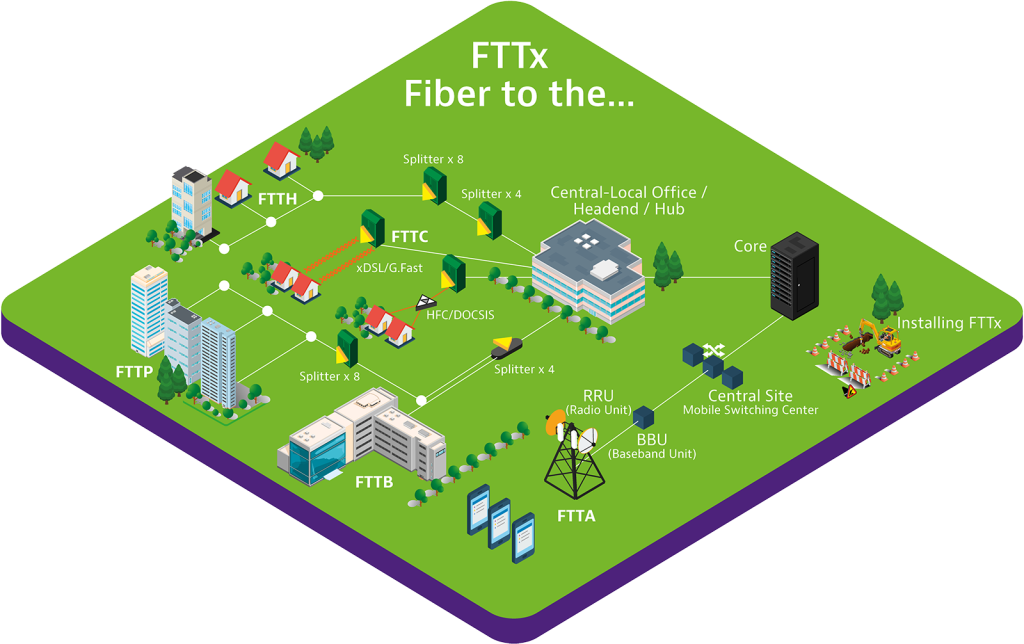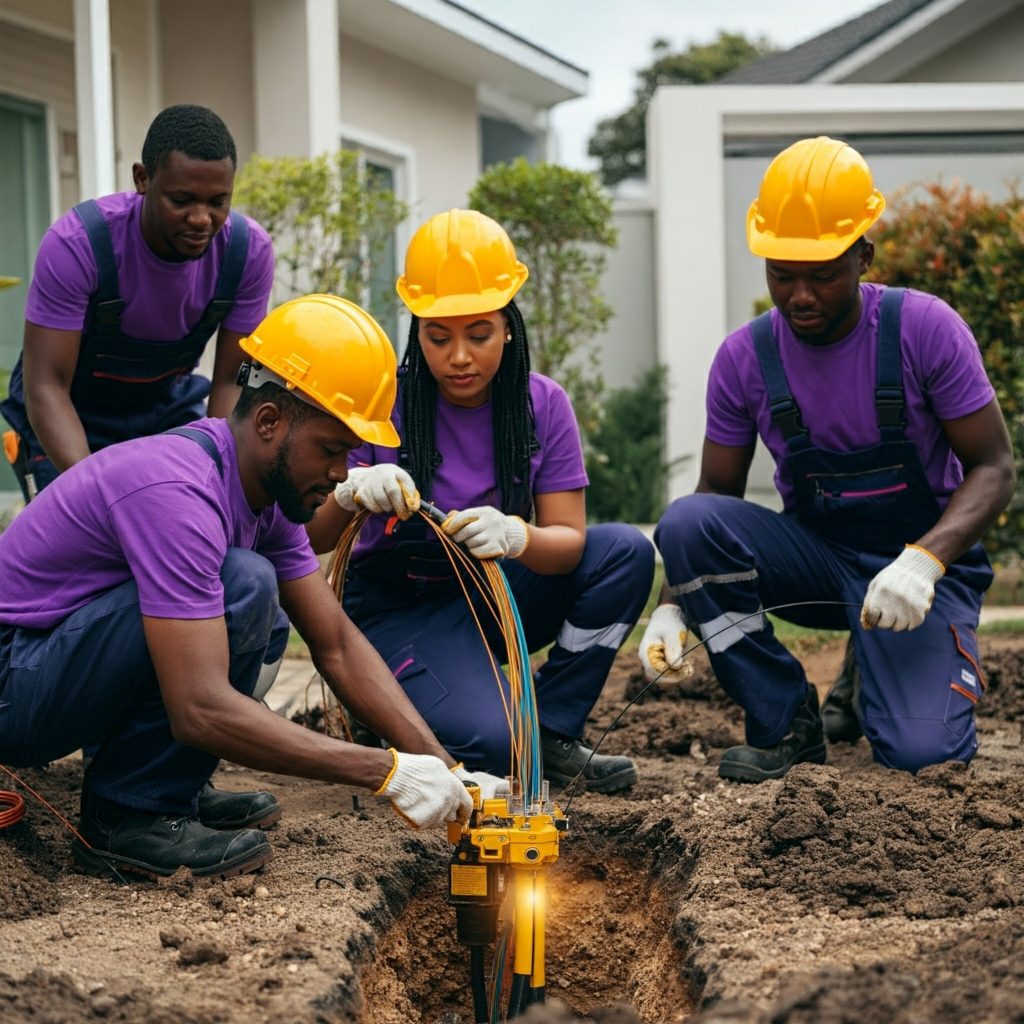Fttx Solutions
The Future of Connectivity
Experience FttX Advantage

Fiber to the x (Fttx) is a broadband network architecture that uses fiber optic cables to deliver ultra-fast internet and data services to homes and businesses. Unlike traditional copper-based networks, Fttx offers significantly higher bandwidth, lower latency, and increased reliability, making it the ideal solution for today’s demanding applications.
We offer end-to-end Fttx solutions, including:
- Headend Equipment: High-capacity OLTs, optical amplifiers, and network management systems.
- Fiber Optic Cable: A wide range of fiber optic cables, including single-mode and multi-mode options, to suit your specific needs and deployment environment.
- Passive Optical Components: Splitters, connectors, and other passive components to build and expand your Fttx network.
- Optical Network Units (ONUs): A variety of ONUs with different capabilities and functionalities to meet the needs of residential and business customers.
- Installation and Maintenance: Expert installation and ongoing maintenance services to ensure the optimal performance and reliability of your Fttx network.

- Ultra-Fast Speeds: Experience symmetrical gigabit speeds for seamless streaming, gaming, and downloading.
- Enhanced Reliability: Fiber optic cables are less susceptible to interference and signal degradation, ensuring a more stable and reliable connection.
- Lower Latency: Enjoy reduced latency for real-time applications like video conferencing and online gaming.
- Future-Proof Technology: Fttx networks are scalable and adaptable, ensuring your infrastructure can handle future bandwidth demands.
- Increased Property Value: Fttx connectivity can increase the value of homes and businesses.
FTTH (Fiber to the Home): Fiber optic cable is run directly to individual residences, providing the highest speeds and bandwidth capacity. Ideal for demanding users and smart homes.
FTTA (Fiber to the Antenna): Fiber connects the base station to antennas in cellular networks, enabling high-capacity mobile data services like 4G and 5G.
FTTB (Fiber to the Building) / FTTP (Fiber to the Premises): Fiber reaches a building or shared premises, with other technologies (like copper) completing the connection to individual units. Offers a balance of speed and cost-effectiveness for multi-dwelling units.
FTTN (Fiber to the Node): Fiber reaches a neighborhood node, and existing copper phone lines connect the node to homes. Speeds are limited by the copper connection.
FTTC (Fiber to the Curb/Cabinet): Fiber reaches a cabinet closer to homes than a node, offering faster speeds than FTTN but still relying on copper for the final connection.
Fttx networks utilize a point-to-multipoint architecture, where a single optical line terminal (OLT) at the service provider's headend connects to multiple optical network units (ONUs) at customer premises. This is typically achieved using Gigabit Passive Optical Network (GPON) technology.
Here's a simplified breakdown of the process:
- Headend (OLT): The OLT is the starting point of the Fttx network. It aggregates traffic from multiple users and transmits data downstream to the ONUs.
- Fiber Optic Cable: Data is transmitted as light signals through fiber optic cables, which offer significantly higher bandwidth and lower signal degradation compared to copper cables.
- Passive Optical Network (PON): A PON splits the optical signal from the OLT to serve multiple ONUs using passive optical splitters. This eliminates the need for active electronics in the network, reducing power consumption and maintenance costs.
- Optical Network Unit (ONU): The ONU, located at the customer premises, receives the optical signal from the OLT and converts it into electrical signals for use by devices such as routers, computers, and TVs.
